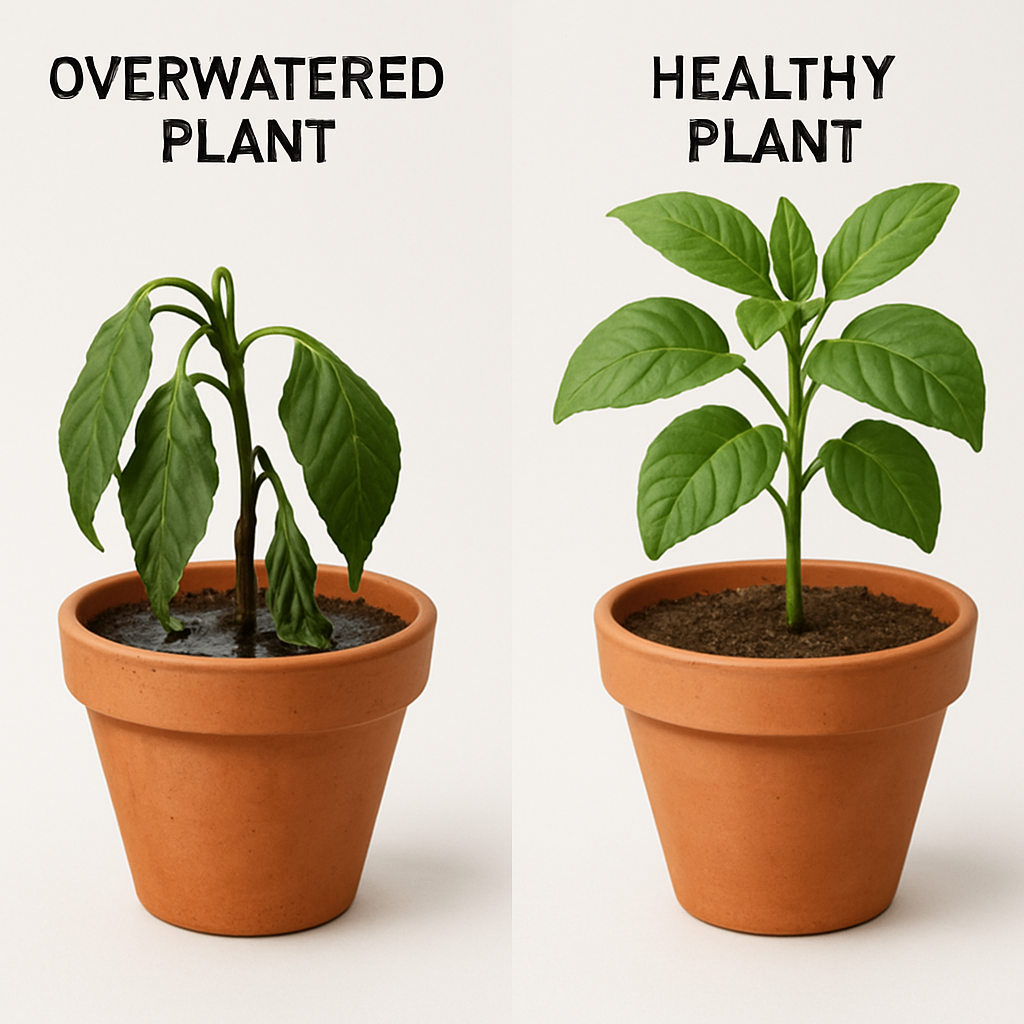Are You Overwatering Your Plants? Here’s How to Tell and Fix It Fast
Overwatering is one of the most common (and sneakiest) ways to harm your plants. Think you’re guilty? Watch for these classic signs of water stress and learn how Penterra can help restore balance and bring your greenery back to life.
Signs You’re Overwatering Your Plants
- Yellowing Leaves – Especially from the bottom of the plant upward, a sign of root rot.
- Wilting Despite Wet Soil – The roots are drowning and can’t take in nutrients or moisture.
- Stunted Growth – No new leaves or shoots? Your plant is struggling below the surface.
- Gray Mold or Mushy Stems – A fungal infection may be setting in due to excess moisture.
- Greenish Soil Surface – Algae growing on the soil is a sign of constant wetness.
- Soggy, Compact Soil – If the soil feels heavy and muddy, roots are likely suffocating.
How to Save Your Plants from Overwatering
Whether your plants are potted or planted, Penterra is the fast, safe, and effective solution to water-related stress.
What Penterra Does:
- Breaks surface tension – Water penetrates deeper and reaches the root zone quickly.
- Improves oxygen flow – Helps restore healthy microbial life in your soil.
- Supports strong root growth – Encourages nutrient absorption and resilience.
- Loosens clay and compaction – Works on any soil type, including sandy soils.
- Eco-friendly and fast-acting – Safe for your plants and the environment.
Don’t Let Your Plants Drown
Revive your garden, indoor plants, and lawn with Penterra. It’s the smart solution for overwatering damage and long-term plant health.
Click Here to Shop Penterra Now
Need Help With Larger Spaces?
For bigger landscapes like golf courses, farms, or public gardens, explore Agriox — a revolutionary oxygen delivery system that restores soil health at scale.

